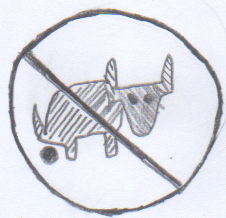One of the most effective leaders I know packaged a lifetime of outperformance in a 5 minute speech.
This post shares the essence of his leadership philosophy.
Lesson No 10 : You suck

Constructively challenge your team – they can do better
Less No 9 : Bullshit

Authentic feedback and coaching. Honest. Direct. In your face.
Lesson No 8 : Mickey Mouse

The idea or proposal is too small. Encourage your team to think big
Lesson No 7 : Play hard and work hard

Every idiot can work hard, so play hard is much more important.
Play hard is important for two reasons. One is to have fun with your team, to inspire your team. Second is to live a balanced lifestyle to avoid insanity. Its important for your team to be effective, and its important for yourself to be effective, so play hard.
Lesson No 6 : Go back

Your team has not done its homework, the numbers are wrong, there is not enough attention to detail. Attention to detail is very important, especially in emerging markets.
Lesson No 5 : Be the lone nut

Creating the right culture is your No 1 job. Do not fear to be the ‘lone nut’. Others will follow you.
Lesson No 4 : Strategy + People + Execution

This is a very useful framework. Remember to spend 90% of your time on People, culture and execution and 10% on strategy. There are a lot of smart people who can figure out the strategy – you can always pay them.
Lesson No 3 : I trust you

Hire and surround yourself with the best people. Then show them your love. You leave them alone after the meeting to do a great job. Don’t pester them, annoy them, confuse them or reduce their motivation. If you trust them you will give them freedom. If you don’t trust them, ask them to move on. There are only two options.
Lesson No 2 : The fish stinks from the head

Drive organisational change starting at the top of the organisation. If you have a problem with a company, or a function or a region, you don’t start with the little people – always start with the leadership of that unit and then make organisational changes top down.
Lesson No 1 : Bottom feeder

Have a clear performance rank and competition in place. The bottom 20% on a repeated basis will leave the organisation or retire. There is a very strong correlation between performance and growth in organisations and you must reward performance.
If you are yourself the bottom feeder for too long, think about whether you are holding the organisation back.

